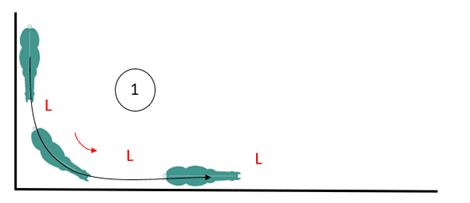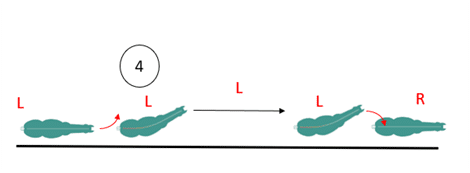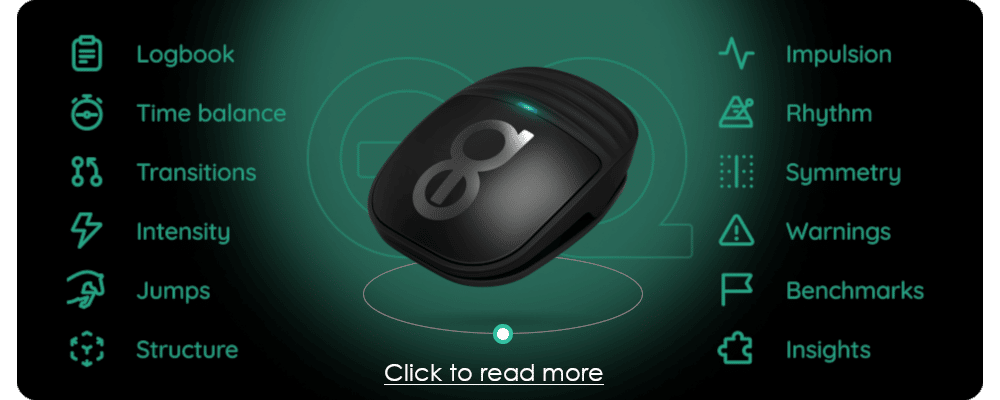Equestic for Research
We continuously seek innovative ways to enhance our understanding and care for equine health
Equine Motion Research
Tool for Research
Equestic Validation
Research Examples
Support for Research
A Revolutionary Tool for Equine Research
The Equestic SaddleClip stands out by overcoming the traditional challenges faced in equine biomechanics research.
Unlike other Inertial Measurement Units (IMUs) that require extensive preparation, training and precise placement on the horse, the SaddleClip is designed for simplicity and reliability.
It attaches easily to the saddle, allowing for accurate locomotion data collection during both ridden and ground-based exercises, without the inter-user variability seen in other devices.
This ease of use and wide adoption, supported by admission of FEI, USDF, and other national federations to use in competitions opens new doors for research possibilities.
It facilitates larger sample sizes, scalable in-field data collection, and the inclusion of ridden work in study designs—expanding the scope of equine locomotion studies beyond the constraints of traditional methods.
Having been embraced by riders, clinicians, and horse owners alike for over five years, the Equestic SaddleClip bridges the gap between sophisticated scientific analysis and practical field use.
Its proven efficacy and user-friendly design make it an ideal choice for institutions facing budget constraints or those without specialized equine biomechanics infrastructure.
Equestic SaddleClip capabilities for research implementation
The Equestic SaddleClip, equipped with advanced accelerometer and gyroscope sensors capturing data at 50Hz rate. It makes multi-axis data collection with comprehensive movement analysis and utilizes Bluetooth Low Energy for seamless data transfer to both the Equestic App and cloud platform.
Enhanced with artificial intelligence, the device accurately identifies gait, direction, and intricate aspects of equine motion such as rhythm, impulsion, and symmetry, providing invaluable insights for research and clinical application.
This combination of cutting-edge technology and consumer-wide availability positions the SaddleClip as a pivotal tool in equine biomechanics research and care at worldwide scale.
Key capabilities
Unlimited trial duration
Ridden or in-hand data collection suitable for any experimental design
Measurements automatically marked by gait and direction with timestamp
Trot motion measurements sampled by 1 second
Duration of diagonal steps in trot with 0,01 sec accuracy
Percentage of steps duration asymmetry between diagonals
Landing force (down) calculated in G-force per diagonal step
Percentage of Landing force asymmetry between diagonal steps
Push-off force (up & forward) calculated in G-force per diagonal step
Percentage of Push-off force asymmetry between diagonal steps
All gaits’ measurements
Average Rhythm BPM (mean) with spread by min/max for the ride
Rhythm Consistency percentage (deviation) automatically calculated per ride
Impulsion force sampled by 1 second
Average Impulsion (mean) with spread by min/max for the ride
Transitions counter Halt-Walk-Trot-Canter and all between (up/down)
Jumps counter with split by approached direction
Product Design and Build
Compact and Lightweight: The SaddleClip is a small, unobtrusive device that attaches easily to the horse’s saddle. Its design ensures that it does not interfere with the horse’s movement or comfort.
Durable Construction: Made with high-quality materials, the SaddleClip is built to withstand the rigors of equestrian activities, including exposure to outdoor elements.
Technology and Features
Sensor: At the core of the SaddleClip is the combo sensor tag, which collects data using an accelerometer and a gyroscope. This technology enables the device to capture detailed movement data at a sampling rate of 50Hz.
Multi-Axis Data Collection: The accelerometer and gyroscope measure movement across three axes, providing a comprehensive view of the horse’s vertical, horizontal, and lateral movements, as well as rotational speeds.
Wireless Connectivity: Utilizing Bluetooth Low Energy (BLE), the SaddleClip transmits the collected data wirelessly to the Equestic App installed on users’ phone (iOS, Android) and Equestic Intelligence Platform in the Cloud. This allows for real-time data analysis and accessibility.
Artificial Intelligence: All raw data from Equestic sensors are processed by the Equestic App identifying gates and direction of movement and then analyzed by comprehensive artificial intelligence algorithms in the cloud evaluating the rhythm, impulsion, and symmetry patterns of horse motion.
Intended Use and Applications
Gait Analysis: The SaddleClip is adept at identifying and classifying different horse gaits, including walk, trot, canter and jumps, tracking its direction and transitions between offering valuable insights for training and performance evaluation.
Rhythm and Impulsion Monitoring: It analyzes the rhythm and impulsion within each gait, providing metrics that are essential for assessing the horse’s balance, coordination, and overall physical condition during a single training and longer timeline.
Symmetry Assessment: In the trot, the SaddleClip evaluates the symmetry of the horse’s diagonal movements in duration of steps, strength of push-off and landing effort measured in G-force. Symmetry data is a crucial factor in identifying potential health issues or areas needing improvement in training.
Easy Integration in Daily Training: Designed for ease of use, the SaddleClip is an ideal tool for daily training sessions, allowing trainers and riders to gather and analyze data effortlessly.
Key Metrics Definitions
Directions
Equestic Saddle Clip is mapping the time of ride in all gaits based on gyroscope measurement of turns. It’s directly aligned to what the rider and horse experienced while moving.
The direction (left/right) is determined with a method based on training in the arena. If you ride counterclockwise, you do a turn left -straight on-turn left -straight on-turn left -etc.
The app registers this as 100% Left direction time, the straight is counted as counterclockwise because your last turn was to the left.
Left rein: Defined as the time of continues motion on any gait after a moment of gyroscope registered move to the left until it registered move to the right including time of straight move.
Right rein: Defined as the time of continues motion on any gait after a moment of gyroscope registered move to the right until it registered move to the left including time of straight move.
Straight move on a rein: Defined as the time of continues motion on any gait with no left or right move registered by gyroscope.
Left rein Direction

The duration of time of ride through the corner of an arena moving counterclockwise is registered as Left direction (L).
Left to Right rein

There is a turn to the left (L), but it has turned too far. Therefore a – slight – turn to the right (R) is necessary to be able to continue riding along the straight stretch of the arena.
In this case, the direction is experienced as counterclockwise, and the SaddleClip measured a right-hand turn (R). The straight stretch that follows is therefore registered as Right direction time(R).
Left – Right – Left

There is a turn to the left (L), but it has turned too far. After it a firm turn to the right (R) and then turn left (L) is necessary to be able to continue riding along the straight stretch of the arena.
In this case, the direction is experienced as changed counterclockwise to clockwise, and the SaddleClip measured a right-hand turn (R) then left-hand turn (L). The straight stretch that follows is therefore registered as Left direction time (L).
Reins transitions

The same can also happen if there is going to be a side gait immediately after the turn (shoulder in, half-pass, etc.).
Rhythm of Gait
Walk rhythm: Defined as the number of full strides (involving all four legs) per minute.
Trot rhythm: Measured by the number of half-strides (each diagonal pair of legs) per minute.
Canter rhythm: Calculated as the number of full strides per minute.
Walk and Canter Analysis
Method. The rhythm in walk and canter gaits is analyzed using a spectrogram, which involves consecutive Fourier transforms on overlapping timeframes.
This method is widely used in various fields for frequency recognition in irregular signals such as music and electrical currents.
The spectrogram identifies all frequencies (stride durations) in the gait data and their distribution within the signal.
This technique is particularly suited for walk and canter, as these gaits are not two-stroke movements and often exhibit irregular patterns due to rider influence or other factors.
Example Disturbances. In walk, disturbances might include specific leg activations, while in canter, variations like a few 4-stroke gallop strides can occur.
Trot Analysis
Method. The trot, being a two-stroke gait with a clear moment of suspension and measurable landing impacts per half-stride, allows for a more direct analysis.
The SaddleClip signal is used to determine specific foot-on, mid-stance, and foot-off timestamps for each half-stride.
Stride Duration. Defined as the time from mid-stance to mid-stance.
Symmetry Analysis. The metrics derived from trot rhythm analysis are also utilized in assessing the symmetry of the horse’s movements.
Implications. These algorithms allow for precise gate identification and a nuanced analysis of rhythm in different gaits, accounting for the inherent variability in equine movement.
Impulsion Analysis
Definition
Impulsion is defined as the maximum upward force exerted within a stride. It’s a key indicator of a horse’s physical output, encompassing the explosivity of the initial push-off and its resulting effect on the horse’s body.
This metric is particularly important in assessing the horse’s athletic ability, training progress, and overall physical condition.
Impulsion Analysis Algorithm
Method. The algorithm for analyzing impulsion in the Equestic SaddleClip is centered around the use of acceleration data as a proxy for force, recognizing the challenges and potential inaccuracies in directly measuring the mass of the horse.
Use of Acceleration Data: Since Force = Mass x Acceleration, and directly measuring the horse’s mass can be error-prone, acceleration data from the SaddleClip’s sensors is used as an indirect measure of impulsion.
This approach takes into account the various joints and the spinal cord that mediate the force from the horse’s push-off on the ground to the movement detected in the saddle.
Analyzing Explosivity and Core Impact: The acceleration data reflects both the explosivity of the horse’s initial push-off and the resultant impact on the horse’s core body.
A well-trained and talented horse, for instance, might require less force to achieve the same level of impulsion, making acceleration a more nuanced indicator of performance than raw force measurements.
Implications
The impulsion analysis algorithm provides a sophisticated and nuanced understanding of a critical aspect of equine biomechanics.
By using acceleration as a proxy for force Equestic SaddleClip ensures a comprehensive and accurate assessment of impulsion, integral for evaluating equine motion performance and health.
Symmetry Analysis
Definition
In the context of equestrian biomechanics, Symmetry Metrics refer to the quantitative assessment of the balance and uniformity in a horse’s movement, particularly focusing on the coordination and consistency of movements on both sides of the body.
Trot is a two-beat gait characterized by the horse moving forward using diagonal pairs of legs (left front with right hind and vice versa), interspersed with moments of suspension.
The symmetry in trot is observed in the sequential movement of these diagonal pairs.
Symmetry Metrics Algorithm
Method. The algorithm for assessing symmetry through the Equestic SaddleClip involves multiple steps, focusing on the trot gait, which is characterized by its two-beat rhythm with diagonal pairs of legs moving together.
1. Measurement of Diagonal Pair Movements.
The SaddleClip collects data on the timing and intensity of movements for each diagonal pair of legs during the trot.
The algorithm focuses on three key metrics for each diagonal pair:
- Step Duration: Measures the time taken for each step by the diagonal pairs.
- Push-off Force: Assesses the force exerted during the push-off phase of each diagonal.
- Landing Force: Evaluates the impact force during the landing phase.
2. Session and Trend Analysis.
Symmetry data is analyzed per training session and over a series of sessions to observe trends and developments in the horse’s movement.
3. Statistical Analysis of Asymmetry.
The algorithm employs statistical methods to quantify the degree of symmetry. The Equestic Intelligence Platform compares these metrics between the left and right diagonals.
It calculates the percentage of asymmetry for each metric: Rhythm (step duration), Push-off, and Landing.
A perfectly symmetrical trot would show zero values for these metrics across diagonals, while any deviation is quantified as a percentage of asymmetry.
Implications
The Equestic SaddleClip provides an analysis of symmetry in the trot for each training session and tracks its development over consecutive sessions.
Ideal Symmetry
In a perfectly symmetrical trot, the time span and distance (both in height and length) of the lifting and placing of the left diagonal and right diagonal are identical.
However, most horses exhibit slight deviations in either the left or right diagonal of the trotting step during a ride session.
Equine Motion Research
Tool for Research
Equestic Validation
Research Examples
Support for Research




